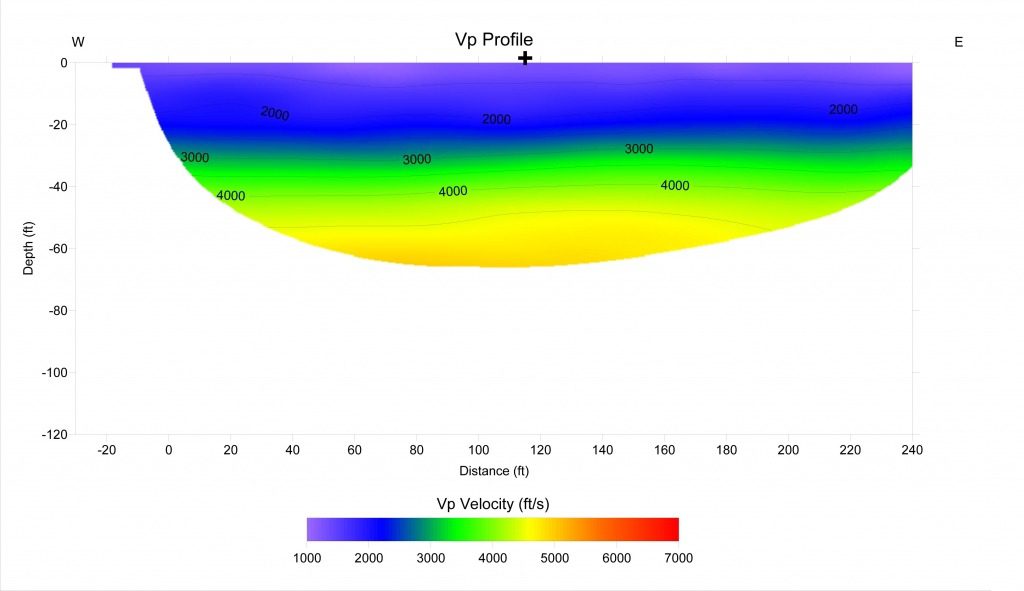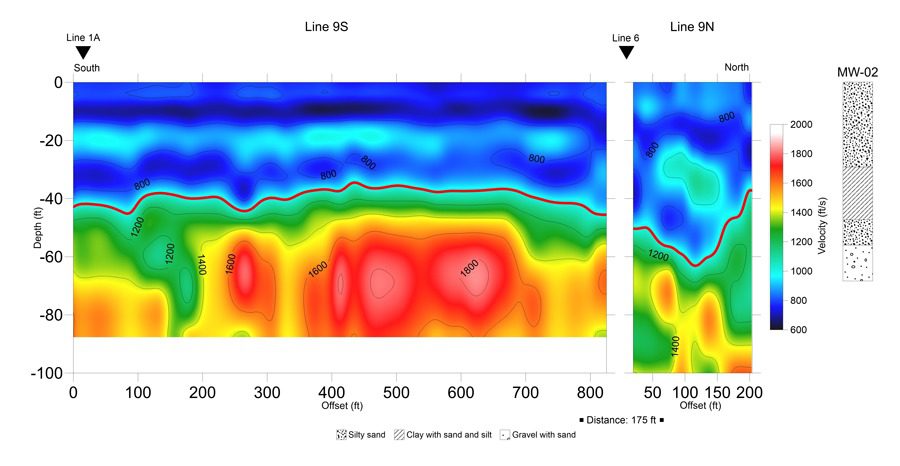Multi-Channel Analysis of Surface Waves (MASW)

MASW is a seismic method that measures the shear-wave velocity distribution, thereby can be used to measure the arrangement of overburden and bedrock. It analyzes the dispersion of surface waves (usually the fundamental-mode Rayleigh waves). Like in other seismic methods, an array of geophones is used to measure the seismic waves. The surface waves for MASW can be generated using an active source like a sledgehammer, or the ambient surface waves created by vehicles and heavy machinery can be used. The method provides the shear wave (Vs) profile in either 1D (depth) or 2D (depth and surface distance) formats. The results can be used to estimate soil and rock strength (stiffness), determine the depth and topography of bedrock (even if bedrock is below water table), map subsurface geology (lateral and vertical variations), map low velocity layers, determine IBC Vs100 (Vs30) site classification, and aid in liquefaction potential analysis.
Applicable on:
- Soil
- Rock
- Paved Surfaces
Test for:
- Shear Wave Velocity
- Soil Stiffness
- Depth to and Shape of Bedrock
Relevant Case Study

Wind Farm Investigation
Geophysics Case Study




